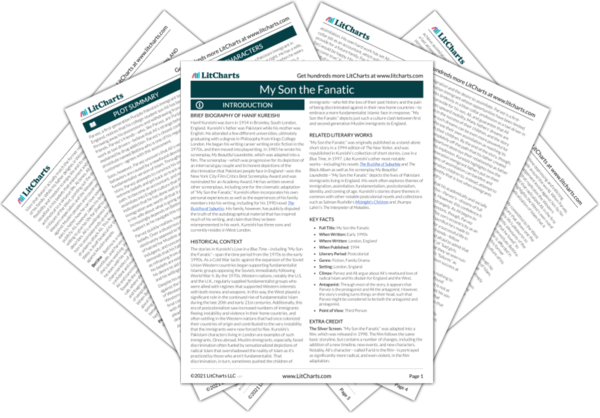Parvez’s taxicab, specifically the seating arrangements in the cab, represent the growing distance between Parvez and Ali that is the cost of Parvez’s unwavering desire to assimilate fully into English culture. From the first mention of Bettina, the narrator specifically notes that she sits not in the back of Parvez’s cab, like a customer would, but in front beside him. This alone indicates the closeness of their relationship. At the end of the story, when Parvez, Bettina, and Ali are all in the cab together, Bettina is already sitting in the front seat, so Ali sits in the back like a customer would. The physical distance between Parvez and Ali, in comparison to the closeness he shares both physically and metaphorically with Bettina, symbolizes that Parvez’s relationship with his son has become distant because he privileges proximity to the West over maintaining connections to his Pakistani past and heritage.








